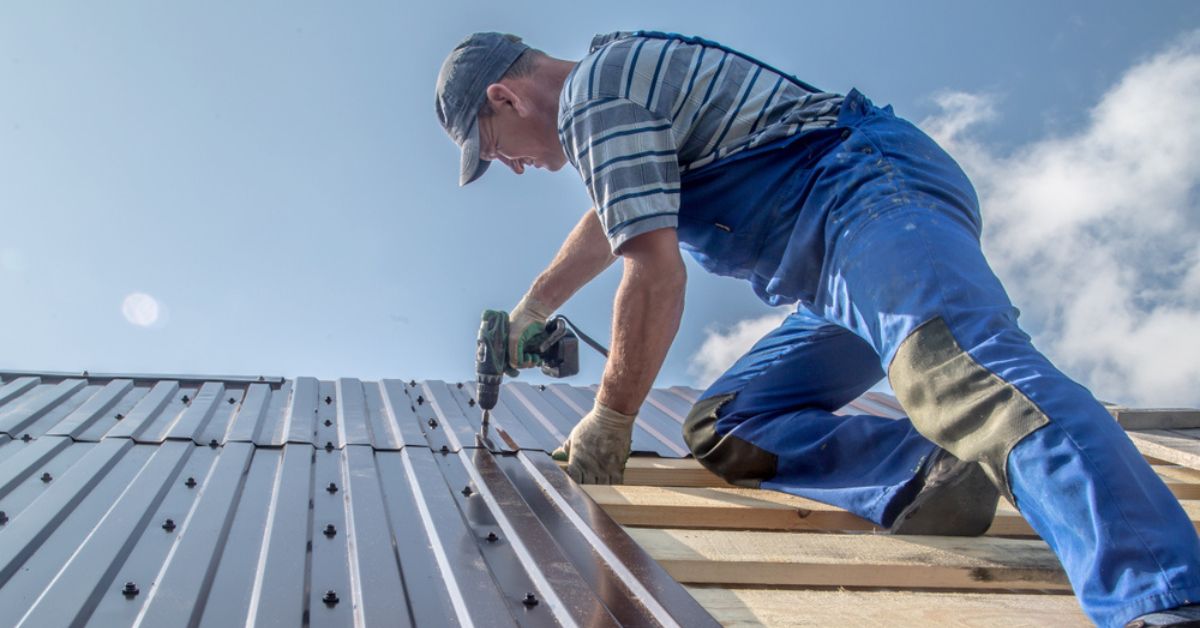When protecting your home from the elements, few investments can match the longevity and durability of a well-installed metal roof. If you’re in the market for a new roofing system, you’ve likely heard the buzz about metal roofs and their impressive reputation for longevity.
But how long can a metal roof be expected to last? That’s the question we’re here to answer in this informative blog post.
Gone are the days when the lifespan of metal roofs was associated solely with commercial and industrial buildings. They’ve become increasingly popular for residential properties due to their impressive performance, energy efficiency, and aesthetic appeal. Let’s look at metal roofs and what makes them last long.
Factors Affecting Metal Roof Life Expectancy
The lifespan of a metal roof is affected by many vital aspects, but it is an investment that can safeguard your house or place of business for decades. You may choose and maintain your roofing by keeping these aspects in mind. Here, we’ll look at the key elements influencing a metal roof’s lifespan.
Metal Type
The type of metal used for your roof significantly impacts its longevity. Common metals for roofing include steel, aluminum, and copper. Among these, copper has the longest lifespan, potentially over a century, while steel and aluminum roofs can endure for 50 years or more.
Coatings and Finishes
The coatings and finishes applied to metal roofs provide protection against corrosion and enhance their aesthetic appeal. Properly applied and maintained coatings can significantly extend metal roof life expectancy.
Installation Quality
A professional and experienced installation is crucial. Poorly installed metal roofing can lead to leaks, premature rust, and other issues that shorten its lifespan. Ensure your roofing contractor has a track record of quality work.
Climate and Environment
The regional climate and environment play a major role in a metal roof’s durability. Extreme weather conditions, such as heat, heavy snow, or corrosive coastal air, can impact the roof’s performance. Regular inspections and maintenance are essential in challenging environments.
Maintenance
Regular maintenance is critical to extending a metal roof’s life. This includes inspections, cleaning debris, and maintaining coatings. Neglecting maintenance can lead to problems that reduce the lifespan of metal roofs.
Ventilation
In order to avoid problems like condensation and rust, proper ventilation helps control the temperature and moisture under the roof. Sound ventilation systems can significantly enhance a metal roof’s durability.
Fasteners and Sealants
The quality of fasteners and sealants used during installation is essential. These components hold the metal panels together and seal joints. High-quality fasteners and sealants ensure a longer-lasting, watertight roof.
Design and Slope
Roof design and slope affect how effectively water drains from the surface. A steep-sloped roof can prevent water buildup, reducing the risk of leaks and rust.
Impact Resistance
The life of a metal roof can be vulnerable to damage from falling debris, hail, or heavy branches. The resistance to impact varies among metal types and their gauges, impacting the roof’s lifespan.
Your metal roof will last long if you recognize and care for these issues. Regular inspections and proactive maintenance are essential to maximizing the lifespan of your investment and protecting your property for many years to come.
Maintenance
An effective maintenance program is essential to a metal roof’s longevity and continued performance. While the life of a metal roof is renowned for its durability, neglecting routine maintenance can lead to problems that reduce its effectiveness and longevity. Here are essential maintenance practices to keep your metal roof in top shape:
Regular Inspections
Conduct routine inspections at least once or twice a year. Inspect for loose or damaged panels, fasteners, sealants, and flashing. Address any issues promptly to prevent water infiltration.
Cleaning
Remove debris, dirt, leaves, and moss from the roof’s surface. Accumulated debris can trap moisture and promote corrosion. Use a soft-bristle brush or a low-pressure power washer to avoid damaging the finish.
Gutter Maintenance
Keep gutters and downspouts clear of debris to ensure proper drainage. Water backup from clogged gutters can harm the slopes of the roof.
Coating Inspection
If your metal roof has a protective coating, monitor its condition. Calculate roof pitch and recoat when necessary to maintain corrosion and UV damage resistance.
Sealant Checks
Check the condition of sealants around roof penetrations, seams, and flashing. Reapply sealant as needed to maintain a watertight seal.
Rust Prevention
If you notice any signs of rust, address it immediately. Scrub the rusted area with a wire brush, apply a rust converter, and repaint the affected area to prevent further corrosion.
Trim Overhanging Branches
Overhanging tree branches can scrape or damage the metal surface during wind or storms. Trim them to prevent potential harm to your roof to enhance the average life of a metal roof.
Snow and Ice Removal
In areas with heavy snowfall, consider using snow guards to prevent the sudden sliding of snow and ice, which can damage gutters and pose safety risks.
Proactive Repairs
Don’t procrastinate on addressing issues. Minor problems can escalate and become costly to fix if neglected.
Professional Maintenance
Schedule periodic roofing contractor Texas inspections and maintenance from a qualified contractor. They have the knowledge to spot problems that a visual assessment would miss.
Record Keeping
Maintain records of all inspections, maintenance, and repairs. This documentation can be valuable for warranty claims and tracking the roof’s history.
Final Words
Average life of a metal roof is a testament to longevity and resilience in the roofing world. With the right materials, proper installation, and diligent maintenance, these roofs can provide reliable protection for your home or business for many decades.
While the specific lifespan can vary based on various factors, you can expect a well-maintained metal roof to last anywhere from 40 to over 70 years, if not longer.
So, if you’re considering a roofing solution that offers durability, energy efficiency, and a timeless aesthetic, metal roofs stand out as an excellent choice. Embrace the peace of mind that comes with a roof built to withstand the test of time, and enjoy the lasting protection they provide.






